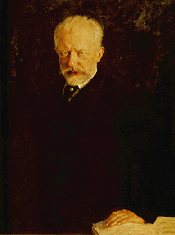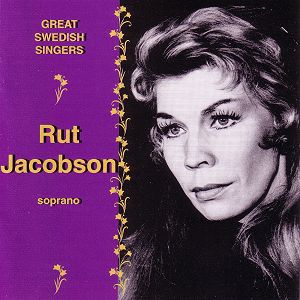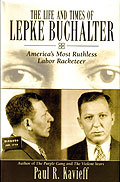The series of
Presidential primary elections and caucuses is one of the first steps in the process of electing the
President of the United States of America. The
primary elections and
caucuses provide a method for
U.S. political parties to nominate and unite behind their popularly chosen candidate for the Presidency.
Process Campaigning for president often begins a year or more before the New Hampshire primary, almost two years before the
presidential election.
For 2008, both the Republicans and the Democrats have moved their Nevada caucus to an earlier date than traditional, with the Democrats holding theirs on January 19th, and the Republicans holding theirs on February 7.
[1] However, on August 9, 2007,
National Public Radio's
All Things Considered reported that
South Carolina's Republican primary date would be January 19.
In response to the Democratic Nevada Caucus being scheduled before the New Hampshire Primary, New Hampshire is widely expected to move their primary to January 8.
[3] The first binding event, in which a candidate can secure convention delegates, is traditionally the
Iowa caucus, held in January of the presidential election year. It is followed by the
New Hampshire primary two weeks later, by tradition and state law always the first primary.
Because these states are small, campaigning takes place on a much more personal scale. As a result, even a little-known, underfunded candidate can use "retail politics" to meet intimately with interested voters and perform better than expected. The Iowa caucuses and New Hampshire primary have produced a number of headline-making upsets in history.
In recent years states have been holding early primaries to maximize their leverage (see
below).
California moved its primary back to June in
2004, having moved it to March in 1996.
January 14—
Iowa Caucus January 15—Michigan Primary
[2] January 19—Democratic Nevada Caucus / Republican South Carolina Primary
January 22—
New Hampshire Primary (tentative)
January 29—Florida Primary
February 5―West Virginia Republican Presidential Convention (Results at 4 PM EST) / California Primary / Arizona Primary
February 7―Republican Nevada Caucus
February 12—Pennsylvania Primary
February 19―Washington State Primary
Harry S. Truman ended his re-election bid in 1952 after losing the New Hampshire primary.
[4] Lyndon Baines Johnson dropped his 1968 reelection bid after performing far below expectations in the New Hampshire primary.
Jimmy Carter, the little-known governor of
Georgia, took a surprise win in 1976 and rode it to the presidency.
Television commentator
Pat Buchanan's strong showing in the 1992 and 1996 New Hampshire primaries highlighted the weakness of the future nominees, incumbent
George H. W. Bush and Senator
Bob Dole respectively, both of whom subsequently lost the general election.
John McCain, a senator from
Arizona, defeated
George W. Bush in the New Hampshire primary in
2000, making it a close contest. (McCain lost the next primaries.)
John Kerry won both the Iowa caucus and New Hampshire primary over heavily favored
Howard Dean to win the 2004 Democratic nomination.
Calendar Franchise in a primary is governed by rules established by the state party, although the states may impose other regulations.
Nearly all states have a
binding primary, in which the results of the election legally
bind some or all of the delegates to vote for a particular candidate at the national convention, for a certain number of ballots or until the candidate releases the delegates. A handful of states practice a
non-binding primary, which may select candidates to a state convention which then selects delegates. Also,
presidential preference contests exist, which are merely "beauty contests" or
straw polls that do not result in the selection of any delegates, which are instead chosen at caucuses. Both parties have rules which designate
superdelegates.
In most states, only voters registered with a party may vote in that party's primary, known as a
closed primary. In some states, a
semi-closed primary is practiced, in which voters unaffiliated with a party (independents) may choose a party primary in which to vote. In an
open primary, any voter may vote in any party's primary. In all of these systems, a voter may participate in only one primary; that is, a voter who casts a vote for a candidate standing for the Republican nomination for president cannot cast a vote for a candidate standing for the Democratic nomination, or vice versa. A few states once staged a
blanket primary, in which voters could vote for one candidate in multiple primaries, but the practice was struck down by the
U.S. Supreme Court in the 2000 case of
California Democratic Party v. Jones as violating the
freedom of assembly guaranteed by the
First Amendment.
 Types of primary
Types of primary There is no provision for the role of political parties in the
United States Constitution, as political parties did not develop until the early
19th century. Before 1820
Democratic-Republican members of Congress would nominate a single candidate from their party. That system collapsed in 1824 and by 1832 the preferred mechanism for nomination was a
national convention. Another trend is to stage earlier and earlier primaries, given impetus by Super Tuesday and the mid-1990s move (since repealed) of the
California primary and its bloc of votes—the largest—from June to March. In order to retain its tradition as the first primary in the country (and adhere to a state law which requires it to be), New Hampshire's primary has moved back steadily, from early March to mid-January.
 History Criticisms
History Criticisms Great attention is paid to the results of the Iowa caucuses and the New Hampshire primary; however, critics, such as Mississippi secretary of state Eric Clark (see quote below), and Tennessee Senator William Brock, point out that these states are not representative of the United States as a whole: they are overwhelmingly
white, more rural, and wealthier than the national average, and neither is located in the fast-growing
West or
South. For example,
New Jersey and
Montana, which are the last states to have their primaries, usually end up having no say in who the presidential candidate will be; in 2004, they had their primaries in June, 13 weeks after Senator
John Kerry became unopposed:
Representativeness States vie for earlier primaries in order to claim greater influence in the nomination process, as the early primaries can act as a signal to the nation, showing which candidates are popular and giving those who perform well early on the advantage of the
bandwagon effect. Also, candidates can ignore primaries which fall after the nomination has already been secured, and would owe less to those states politically. As a result, rather than stretching from March to July, most primaries take place in a compressed time frame in February and March. National party leaders also have an interest in compressing the primary calendar, as it enables the party to reduce the chance of a bruising internecine battle and to preserve resources for the general campaign.
In such a primary season, however, many primaries will fall on the same day, forcing candidates to choose where to spend their time and resources. Indeed,
Super Tuesday was created deliberately to increase the influence of the South. When states cannot agree to coordinate primaries, however, attention flows to larger states with large numbers of delegates at the expense of smaller ones. Because the candidate's time is limited, paid advertising may play a greater role. Moreover, a compressed calendar limits the ability of lesser-known candidates to corral resources and raise their visibility among voters, especially when a better-known candidate enjoys the financial and institutional backing of the party establishment.:
Front-loading and compression There are several proposals of reforming the primary system. Some have called for a single nationwide primary to be held on one day. Others point out that requiring candidates to campaign in every state simultaneously would exacerbate the purported problem of campaigns being dominated by the candidates who raise the most money.
Reform proposals Alternative reform concepts are typically designed around a
graduated random presidential primary system, variations of which have been referred to as the American Plan or the California Plan. Such a system would return the presidential primary season to a more relaxed schedule. The idea is that fewer initial primaries, typically in smaller states, would allow grassroots campaigns to score early successes and pick up steam.
Graduated Random Presidential Primary System A commission empaneled by the Republican National Committee recommended the
Delaware Plan in 2000. Populous states objected to the plan, however, because it would have always scheduled their primaries at the end of the season. The Delaware Plan was put to vote at
Republican National Convention of 2000 and rejected.
In fiction Ames Straw Poll Iowa caucus New Hampshire primary United States presidential election United States presidential election debates United States presidential nominating convention


 de Finetti in English
de Finetti in English Community colleges
Community colleges University centers
University centers


 Activities
Activities

 Establishment
Establishment Ireland
Ireland Latin America
Latin America
 Biography
Biography Topics in pragmatics
Topics in pragmatics
 Local amenities include one of the finest primary schools in Wales, which teaches through the medium of Welsh and English. There is also a small local
Local amenities include one of the finest primary schools in Wales, which teaches through the medium of Welsh and English. There is also a small local  Townships
Townships See also
See also Types of primary
Types of primary History
History